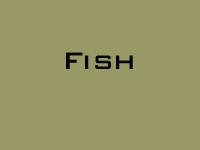
 |
 |
Brook stickleback
Culaea inconstans
The brook stickleback is a freshwater representative of the stickleback family (Gasterosteidae), a family that inhabits a range of shallow water habitats (marine, freshwater, and brackish) of the northern hemisphere. The sticklebacks are part of the order Gasterosteiformes, which includes seahorses and pipefishes. This species is small, averaging 2 inches in length and recognizable by the 5 blade-like spines protruding from the dorsal fin. Brook sticklebacks have fascinating repreoductive behaviour. The male constucts a round nest with a single opening on macrophytes or on the ground. A male then attempts to lure females into the nest; if successful, the female is induced to deposit eggs in the nest and quickly departs. The male fertilizes the eggs and defends the nest from predators. Hatching takes place 8-9 days later, and the young sticklebacks swim away to fend for themselves. The brook stickleback is a freshwater representative of the stickleback family (Gasterosteidae), a family that inhabits a range of shallow water habitats (marine, freshwater, and brackish) of the northern hemisphere. The sticklebacks are part of the order Gasterosteiformes, which includes seahorses and pipefishes. This species is small, averaging 2 inches in length and recognizable by the 5 blade-like spines protruding from the dorsal fin. Brook sticklebacks have fascinating reproductive behaviour. The male constucts a round nest with a single opening on macrophytes or on the ground. A male then attempts to lure females into the nest; if successful, the female is induced to deposit eggs in the nest and quickly departs. The male fertilizes the eggs and defends the nest from predators. Hatching takes place 8-9 days later, and the young sticklebacks swim away to fend for themselves.
